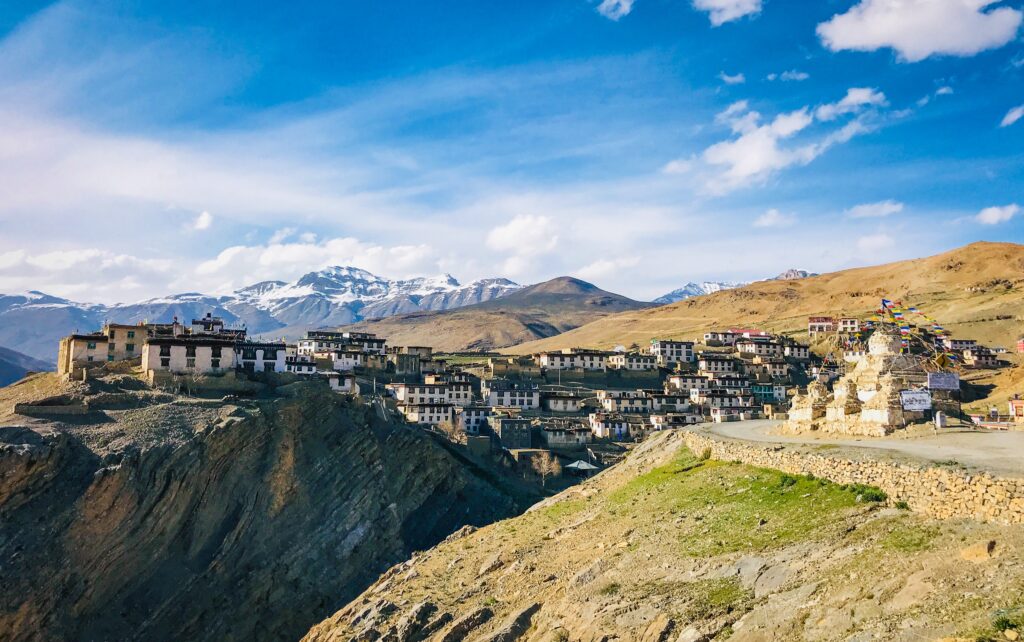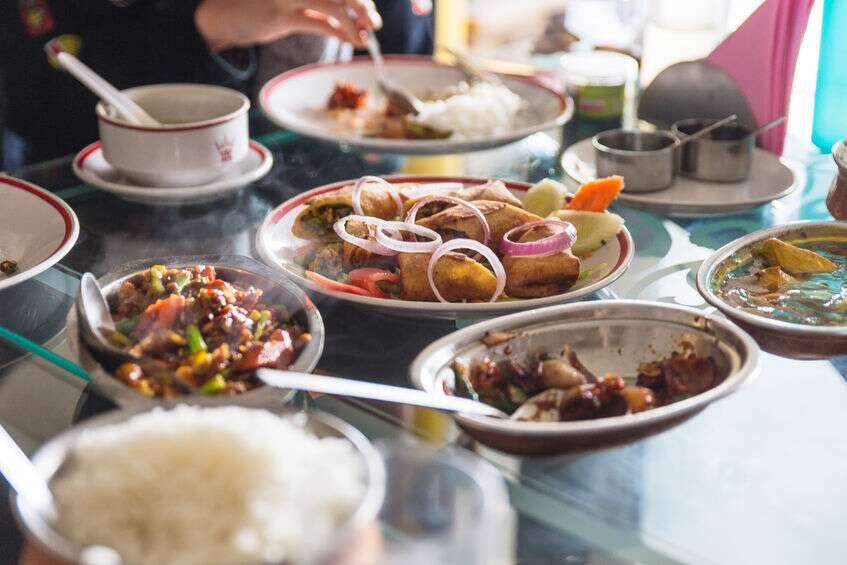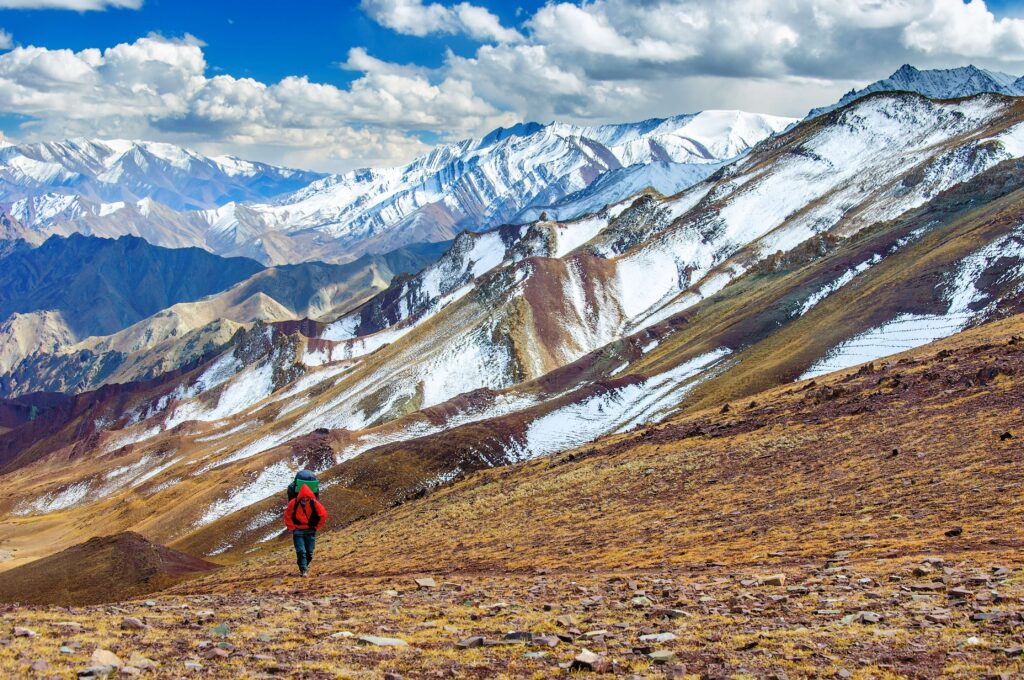Leh Ladakh

It is located in Ladakh in the region of Jammu and Kashmir. Leh is known for its dramatic landscapes, Buddhist temples and undefined scenery, and there is no other land like Ladakh.
It is truly astounding to see mountains, snow, deserts, alpines, and lakes at a very short distance. Buddhism is also known as the Land of Lamas (Little Tibet) due to its strong influence. Mountains painted with gompas, whitewash stupas and pleasing prayer flags. Similar to Tibetan culture, the people of Ladakh are friendly and welcoming towards tourists.
It developed as a highly favoured adventure spot from high-altitude treks to river rafting. Leh is also a trading centre, offering an exciting shopping experience with well-crafted Tibetan handicrafts, jewellery, woollen clothes and magnificent carpets.
Places to eat in Ladakh:

It has a restaurant serving all kinds of cuisines. Kashmiri, Tibetan as well as western cuisines are easily available. Tibetan dishes like momos or dumplings (veg/non-veg) are based on the person’s taste, and thupka, a soup with vegetables, is famous among tourists. They also have bakery shops which provide fresh cakes, loaves of bread, and many more.
The best time to visit Leh is June-September.
Adventure in Ladakh
Ladakh is a dream destination for all adventure addicts. Everything you want to do, from rock climbing to paragliding or bike trips, is here, depending on the weather. Leh Ladakh has no shortage of adventure and good soul-stirring options to fulfil your thrust for adrenaline kicks.
Best Adventure Sports in Ladakh to Enjoy
Trekking Options in Ladakh
Explore the natural beauty and culture of the Himalayas. Great canyons, diversity, and a wide range of flora and fauna can make you feel close to nature like no other. These are must-do activities and cannot be missed while vacationing.
Below is the list of some famous treks in the region for you:
1. CHADAR TREK

The Chadar Trek adventure begins at Leh, at 11,400 ft. It is an experience of a lifetime. During the winter, the Zanskar river freezes, completely covering a thick sheet of ice. It’s called by the name ‘Chadar’ or blanket.
The Chadar Trek is the slow gain it takes in altitude, spread evenly throughout, and takes you to a maximum height of 11,800 ft, deep in the Himalayas! The distance covered during the trek is 62 km, spread evenly throughout the six days you undertake on foot. The Chadar trek is only open in January and February, as these are the only times when the emerald, flowing Zanskar river is frozen enough to enable trekking on it.
Though you may have the blessed opportunity of experiencing a temperature slightly above 0 degrees as you land in Leh, as soon you cross over to Ladakh and start the frozen river trek, the temperature dips to sub-zero degrees. The temperature throughout the trek varies from -5 to -15 degrees during the day and reaches as low as 30 degrees during the night.
DO’s&DON’T’s:
DO’s:
• It is always good to inform your family about this trek. At least one person should know about the schedule back home who can easily come if a mishap occurs.
• It is important to carry the first-aid kit.
• It is also important to carry some handy snacks and a water bottle during the trek.
• The temperature drops negatively on the Chadar trek, so it is important to carry warm clothes and waterproof shoes.
• Always follow the instructions of the leader.
• There are a lot of temples on the trek. Show respect to the culture.
DON’T’s:
Do not litter. Keep the surroundings clean.
Do not use soaps while bathing in the lakes during the trek. The locals use this water for drinking purposes.
Walking on the frozen Zanskar river is not easy; it is better to follow the guidelines.
Do not spoil the tranquillity of the surroundings and serenity of the place.
2. MARKHA VALLEY TREK

This trek is also known as the tea house trek, where one can expect accommodation in parachute tents. The trek involves many river crossings, some waist-deep, and crossing the high pass Kongmaru La (17,060 ft). There are also incredible rocky canyons along with the trail.
There are three different starting points for this trek- Stok, Spituk and Chilling. Spituk is the most popular starting point. From the Spituk side, however, you gain altitude very rapidly to Ganda La (over 5,000 ft in two days) before descending sharply to Skiu.
Best Time to Visit July to Mid September
3. STOK KANGRI TREK

It is one of the highest treks in the world. It stands at 20,100 ft. and is the highest mountain in Europe; Mt. Elbrus, at 18,510 ft, is higher than the mountains in Africa. You must bravely survive zero-degree temperature, trek on the glacier for about 6-7 hours at night, and walk on the slope for two hours to reach the top. Although Stok Kangri does not prefer technical experience, that does not mean it is for beginners. The view from the Stok Kangri peak is worth all the uphill battle.
The best time to visit the Stok kangri trek is July to Mid September
4. SNOW LEOPARD TREK

Snow Leopard trek, also known as (Hemis National Park), is one of Ladakh’s main attractions that bring many animal lovers worldwide. It extends at 4100 meters and covers the entire Rumbak Valley. The national park is home to various species like -Snow Leopards and Himalayan fowl. This trek is one of the popular winter treks in Ladakh; it lies in the territory where human hospitality evanesces and a wild stretch of jagged mountains with a creature like snow leopards, Tibetan wolves, blue sheep, horned sheep Brown Bear and many more. It is also a house to many other species like the Golden Eagle, birds and vultures.
Snow Leopard Trek is situated in the eastern part of Ladakh. It is a high-elevation protected area created in 1981 to conserve and protect its unique flora and fauna.
The best time to visit: November –March.
Things to carry with you:
· Essentials like woollen and fleece clothes, synthetic or waterproof track pants, rain-proof jackets, sunglasses, waterproof gloves, wind-proof jackets, and thermal innerwear.
· A sturdy backpack with a waterproof lining
· High-ankle trekking shoes with good grip, stick
· Moisturizer and chap-sticks
· Torch, water bottle, extra polythene bags and whistle.

